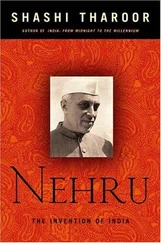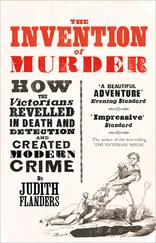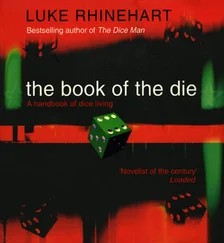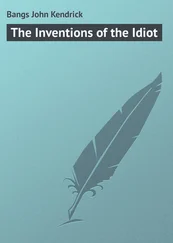Inspired by the Begriffsgeschichte of Reinhart Koselleck and the reflexive sociology of Pierre Bourdieu, 5the present book offers a kind of “microhistory” of the “underclass,” centered on the period of its hegemony. I pay close attention to the circumstances of the invention, the timing of the diffusion, and the variegated meanings of the term as well as to the institutional positions of those who pushed for and (more rarely) against its deployment. I draw up a genealogy of the notion by tracking its peregrinations across the boundaries of the scientific, journalistic and political fields from the heady days of the progressive 1960s to the somber years of the neoconservative 1980s and the late boom of the neoliberal 1990s.
Turning to anatomy, I distinguish three faces of the “underclass”: the structural conception coined by the Swedish economist Gunnar Myrdal to forewarn about the dire consequences of postindustrialism for working-class formation; the behavioral view favored by policy researchers and think-tank experts, which quickly diffused to achieve hegemonic status; and the neo-ecological approach developed by the sociologist William Julius Wilson to highlight the role of the neighborhood as multiplier of marginality. Together, these form what I call the “Bermuda triangle of the underclass,” in which the historical nexus of caste, class and state in the metropolis effectively vanishes from sight. 6
Conceptual history meets reflexive sociology
Two strands of social inquiry provide resources for probing the fabrication and fate of a concept: the Begriffsgeschichte of the German historian Reinhart Koselleck and the reflexive sociology of Pierre Bourdieu, grounded in the applied rationalism of Gaston Bachelard and Georges Canguilhem.
Drawing on historical philology and the hermeneutics of his teacher Hans-Georg Gadamer, Koselleck’s “conceptual history” is exegetical; it focuses meticulously on texts to trace the changing semantic charge of “fundamental concepts” ( Grundbegriff ) and “keywords” ( Stichwort ) as “indicators” of evolving historical constellations across conjunctures and epochs. It stipulates that language is not “an epiphenomenon of so-called reality” but “a methodologically irreducible guiding authority, without which experiences could not be had, and without which neither the natural nor the social sciences could exist.” It enjoins us to capture “historical arrangements of concepts” synchronically in their “concrete contexts” as well as diachronically as part of the “linguistic arsenal of the entire political and social space of experience” (1); to link them to the political conflicts of the period of their circulation; and to critically evaluate these concepts for their use in social analysis. A study of the “underclass” informed by Koselleck must thus excavate the layers of meaning of the term, check its sources, probe its dissemination, and establish its relation to current sociopolitical issues.
Koselleck relies on the political theory of Carl Schmitt, for whom politics is fundamentally about the opposition between “friend and enemy,” to develop the notion of asymmetrical counter-concept , by which he designates pairs of opposite notions (hellenes/barbarians, Christians/heathens, Übermensch/Untermensch ) that serve at once to build self-identity and to effect the exclusion of others by denying them mutual recognition and social reciprocity: “Asymmetrical counter-concepts have a lot to do with the art of silencing. They are means of attributing things to other people, to those who do not belong to our group, through a binary conceptualization that reduces them to a purely negative semantic field” (2). Koselleck then urges us to ask: who benefits from the use (and abuse) of such pairs? In the case of the “underclass,” what is the “we-group” that forms the tacit component of this asymmetrisch Gegenbegriff (3)?
Reflexivity in social science comes in three varieties (4). Egological reflexivity involves a sociological return onto the person of the researcher in an effort to control how her social position and trajectory (gender, class, ethnicity, age, etc.) affect her intellectual output. Textual reflexivity concerns itself with the ways in which the rhetorical forms employed by the researcher (voice, trope, metaphors, style, etc.) shape her object. Epistemic reflexivity , as advocated by Pierre Bourdieu, aims to control the “scholastic bias” introduced by the categories, techniques, and theories the sociologist uses as well as by the “scientific attitude” itself, which differs fundamentally from the “natural attitude” of everyday life dear to phenomenologists. Accordingly, Bourdieu deploys the “science of science” as vehicle for a reflexivity aiming to increase our collective capacity to design, engage and master properly scientific problematics (5).
In this regard, the French sociologist extends to social science the principles of historical epistemology , the discontinuist philosophy of science developed by his teachers Bachelard and Canguilhem, according to which science advances through rupture and reconstruction, thanks to an endless work of “rectification of knowledge” already there, and by overcoming “epistemological obstacles,” among them the contamination of scientific thought by ordinary constructs and turns of thought (6). Canguilhem urges us to ground the history of science in the genealogy of “conceptual filiations” to detect how these shape and displace problems over time. The present book is an application, to the thematics of the “underclass,” of the tenets of historical epistemology – a practical exercise in epistemic reflexivity.
Bourdieu takes us beyond historical epistemology with his theory of symbolic power and fields of cultural production , which serves to map the nexus of institutional positions and symbolic position-takings adopted by cultural producers such as artists, journalists, knowledge experts, state officials, and scientists (7). Thus, the scientific field is a space of forces that orient the strategies of scholars (their choice of objects, methods, theories, publishing outlets, etc.) and a space of struggles for the monopoly over the definition of scientific competency. The scientific cosmos itself is embedded within the field of power , where holders of rival forms of capital – artistic, scientific, religious, journalistic, juridical, bureaucratic, and economic – vie for establishing their supremacy and their particular interest as universal (8). It follows that to decipher a body of texts, such as competing discourses on the “underclass,” one must link the position of their producers and consumers, not in society at large, but in the relevant microcosms – in this case, the social scientific, journalistic, and political-policy-philanthropic fields – to the particular stance they take on the existence, makeup, and predicament of the “group.”
The combination of Koselleck and Bourdieu promises to be fruitful: the former brings an interpretive focus on texts and sources, the latter a relational framework within which to locate the producers and consumers of those texts, and to trace their practical repercussions. Together they pave the way for a structural hermeneutics of the “underclass.”
1 Reinhart Koselleck, “Begriffsgeschichte and Social History” (1982), p. 411, and idem, The Practice of Conceptual History: Timing History, Spacing Concepts (2002). See also Niklas Olsen, History in the Plural: An Introduction to the Work of Reinhart Koselleck (2012).
2 Reinhart Koselleck, Javiér Fernández Sebastián, and Juan Francisco Fuentes, “Conceptual History, Memory, and Identity: An Interview with Reinhart Koselleck” (2006), p. 125.
Читать дальше












